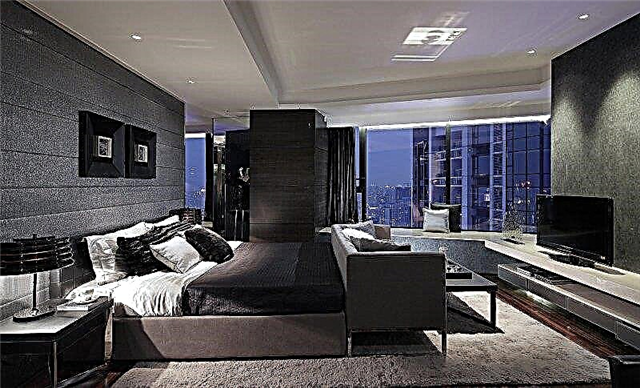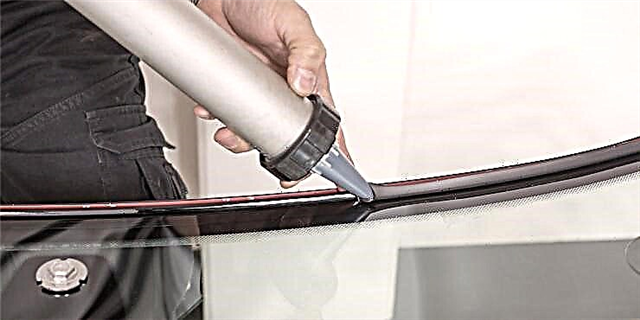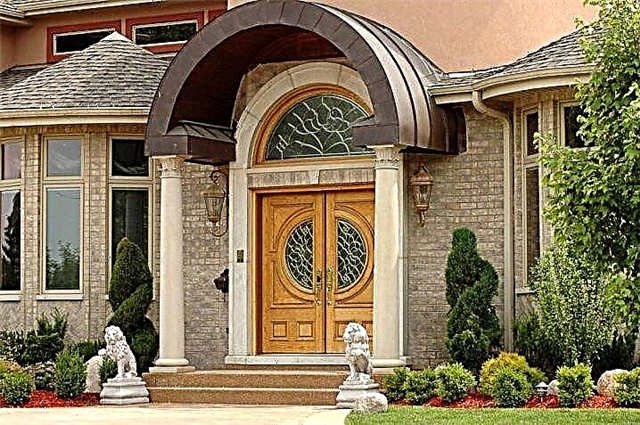Tiles and ceramic tiles are floor coverings that are used very often. However, not all people know how to apply them competently, to take into account all the design moments and nuances. Therefore, familiarity with these subtleties is of particular importance: it does not happen superfluous, but it helps to diversify the interior of the room. Today, green floor tiles are very popular. You can use very beautiful ideas for a stylish interior and give the room a unique zest.
Features
Green tones are recognized by all experts as one of the best for the human psyche - they are visually more harmonious than others. Where there are such colors, less stress occurs. This advantage also pushes people to experiment with green color of finishing materials. In the bathrooms, where every day always begins, where people come to relax after workdays, they have the right place. For all its versatility, white is typical and boring; few people can be surprised.
Green floor tiles create a feeling of naturalness and freshness in the room., but it must be chosen carefully enough, because it is very easy to make a mistake. Do not confuse floor and wall coverings, with external similarity they are completely different, and one cannot be replaced with another.
Differences
Floor materials differ:
- increased wear resistance
- minimal slip
- matte outer layer (not always, but in most cases),
- the label contains an image of the human foot (not the brush),
- there is a marking AA (indicating increased resistance to negative external influences).
Selection tips
In a large bathroom, the specific dimensions of the cladding materials do not matter much, you can even use mosaic images or use tiles of different sizes. If you need to arrange a small space, do not choose large tiles, they will upset the balance. However, too small products are also not suitable, it is better to use medium-sized options (with a side of 200 or 300 mm). When the goal is visual expansion, it is worth using the horizontal masonry of a rectangular tile, you can make the room higher by vertical placement.
Glossy ceramic tiles are more common than other optionssince they give a vivid reflection and look beautiful, they are relatively easy to clean. However, they also have weaknesses - for example, the occurrence of glare, which is extremely harmful to people with poor eyesight. The matte finish is rough, the risk of falling is almost completely eliminated. However, be prepared to make cleaning in the bathroom more difficult. Sometimes textured (decorative) tiles are laid on the floor.
A decorative coating is created using different materials: stone, metal, wood (this is only a small part of the possible options). Technologists have long worked out imitation of sand and gravel, water and cobwebs, and many other interesting options. When choosing, you can be guided by both personal taste and imagination, and the recommendations of experienced designers.
Color schemes
Green color has various shades. Lime, emerald, olive tones look very fresh. In the classic bathroom interior, any dark variety of green tones is equally appropriate. If you want to make the room more modern, lighten it: it will also make the space visually wider.
Carefully think through combinations of shades with each other. Universal white color harmoniously combines with green, cream, yellow and beige tones show a little less well. Either the floor surface or plumbing can be green, but simultaneous use is unacceptable according to the rules of design. This restriction does not apply to furniture, only the decision to make here.
The selection of color combinations depends on the style. In the “Greek” bathroom, only the olive tone works well, both separately and together with white. Decorative tiles are best taken with calm seascapes. In the "tropical" interior, lime shades are appropriate, and in an Art Deco setting, it is permissible to combine all varieties of green with white, golden or yellow.
Additional recommendations
To get rid of associations with swamp mud, choose green varieties that remind of emeralds, other precious and semiprecious stones. A good option is pictures with images of vegetation, especially forest or beginning to bloom. A bush covered with berries will appeal to anyone. Do not use too much bright color, otherwise the room will appear cold and uncomfortable.
When the green shade is selected as an accent, 1/5 of the entire floor space (or even slightly less) should be allocated for it. The benefits of this color appear when it shades the brilliance of marble, wood drawing and the play of light reflected by mirrors. The Scandinavian style allows you to decide on experiments when white, green colors and tones separating them are combined. The overall impression of the floor is like a dirty green or haze.
You can use a green flooring even when designing other surfaces in the same color, but then you need to enter the contrast of textures, textures or rhythm, apply a mosaic. Not only combinations with white are allowed, but also gray-green combinations, the combination of the main tone with peach, blue, purple, even turquoise. An interesting and extraordinary move is the surface of one color, in the middle of which a panel is placed.
Designer's tips for color in the interior of the bathroom, see the next video.
All rights reserved, 14+
The use of any materials without our prior written consent is prohibited.
Dimensions
Different manufacturers of green floor tiles produce samples of various parameters. Here you can find both rectangular, square, and elements of a fantasy shape. The most common size of this coating is 33x33 cm. This is the average size, which is suitable for laying both in small rooms such as a pantry or a bathroom, and in larger rooms.
Also, to create an unusual floor covering, manufacturers offer tiles of a very small size, for example, 15x15 cm, or, conversely, large-sized porcelain tiles with side lengths of more than one meter.
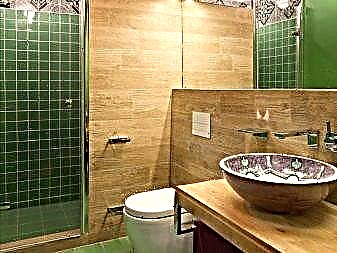
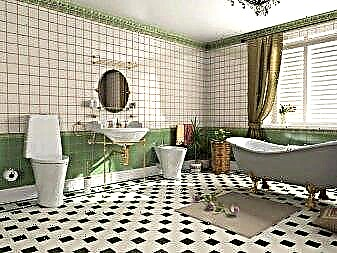
What to combine with?
Green floor tiles are presented on the market of finishing materials with a fairly wide range of shades. Here you can find completely different tones from light green, lime, olive, lime shades to rich tones of fresh grass, deep tones of malachite or emerald. When choosing a shade of green floor tiles, it is very important that the floor in the room does not become a stain that will not be combined with the rest of the interior, as this can ruin the whole view. It is very easy to combine any shade of green with tones such as white, milky, cream and beige.
For the selection of tones, it is better to use the rules of colorization, where there are already several combinations that can be applied in your home.
The green floor with natural wood furniture in warm brown shades will look great. This combination is created by nature itself.
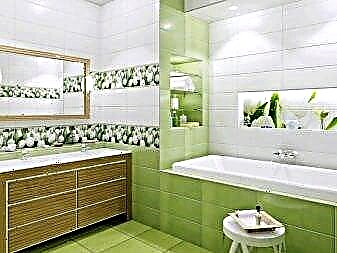
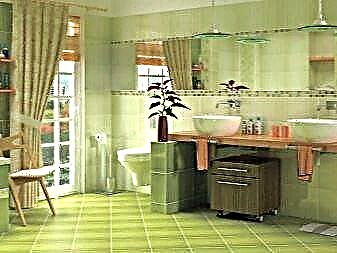
Noble shades of dark green will look great with plumbing and marble wall cladding. Here you can get a rather expensive glamorous interior.

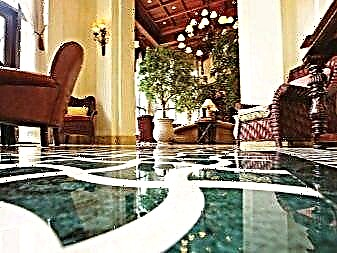
Use in the interior
The green floor, decorated with ceramic tiles, can be used in many rooms. It is quite difficult to imagine the floor in the bathroom without laying this coating, and the green color is no exception. For this room, it is better to use a coating with a matte surface. This is due to the fact that, according to statistics, most household injuries are received by people precisely when they fall on a slippery tile in the bathroom.
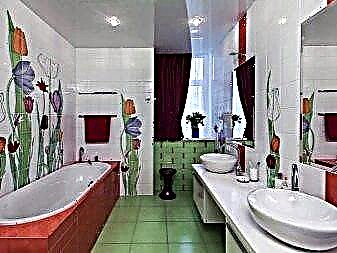
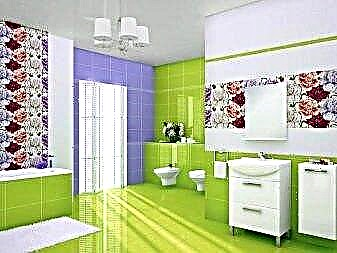
The second most popular room in the home, where ceramic tiles are used as flooring, is the kitchen. Here, the facing material can be either glossy or matte, it all depends on your preferences, but remember that washing the glossy coating is much easier.
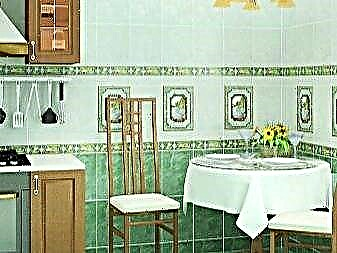
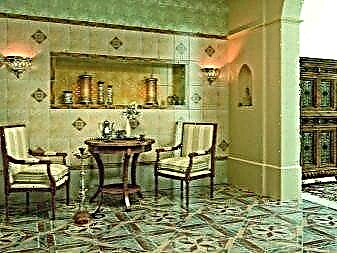
The next room, where green floor tiles are often used, is the hall. Often from the street we put sand and other rubbish on shoes, and it is much easier to remove tiles than, for example, parquet, especially since the ceramic coating is not afraid of moisture.
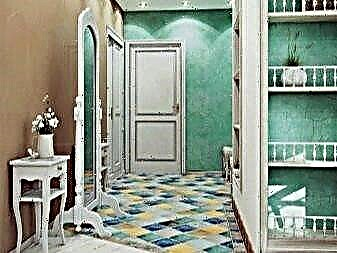

Styles
Green floor tiles can be used in many stylistic decisions of the interior, it all depends on the right shade. So, in the classics it is better to give preference to noble dark tones, such as emerald, malachite. Using the floor of these shades, you can give the room sophistication, add luxury.
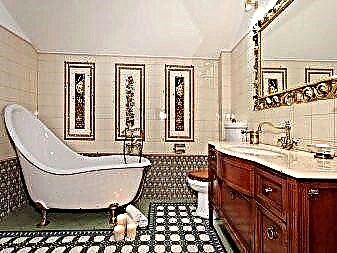
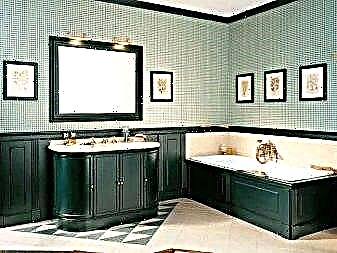
In modern styles, you can use completely different shades. For the Scandinavian style, it is worth giving preference to “dusty” shades of green. Here you can use geometric ornaments, or lay out a mosaic on the floor using tiles of different colors.
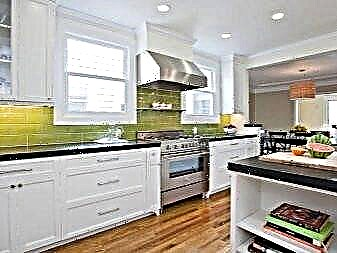

In the Greek style, the floor should have a nice olive shade. It can also be combined with white, black tones, or decorate the room in monochrome. In the latter case, it is recommended to use various textures on the walls and floor.

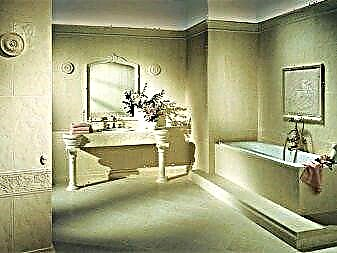
Interesting samples
Some manufacturers use green to create their collections:
- Golden Tile Byzantium. Judging from the name, it becomes clear what era the designers tried to convey, creating this model. Byzantine motifs in the form of curls on the tiles will help emphasize the classic interior of your room. It is applicable not only in the bathroom, but also in the hall and in the kitchen. The sample is produced in Ukraine, its cost is about 750 rubles per 1 sq. Km. m
- Cotto Artistico Dtl Mugello of the Franco Pecchioli factory, Italy. The color of aquamarine will create an original and rich coating on the floor. Deep tone and aged texture (the surface seemed to sharpen drops of water for many years) will help give your room an original look. Each element of the collection is created manually, therefore it is unique. The cost of the sample is about 5000 rubles per 1 sq. Km. m
- Belani Symphony. Belarusian floor tiles of high quality. Its design imitates a mosaic, it looks quite original. The cost of this coverage is quite budgetary and amounts to only 560 rubles per 1 sq. Km. m
Original ideas in the interior
Green tiles on the floor can often be found in rather bold and original interior ideas:
- Green malachite is appropriate even on the floor in the living room, especially since in the middle of the room the tiles are laid out in the form of a carpet.
- Porcelain tiles in a green hue combined with wood-like elements are an excellent solution for an Italian-style kitchen.
- A monochrome bathroom, where the olive color changes from the floor to the walls, looks pretty good provided there is a difference in textures on the horizontal and vertical planes, and it is also perfectly diluted with boiling-white fixtures.
See how to lay floor tiles yourself in the next video.
Green floor tiles in interior design
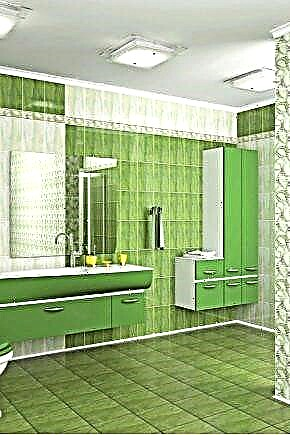
As you know, the green color has a rather favorable effect on the nervous system, contributes not only to calm, but also can relieve tension from the eyes and give inner harmony. Therefore, many, choosing flooring for their home, prefer a tile of these shades.
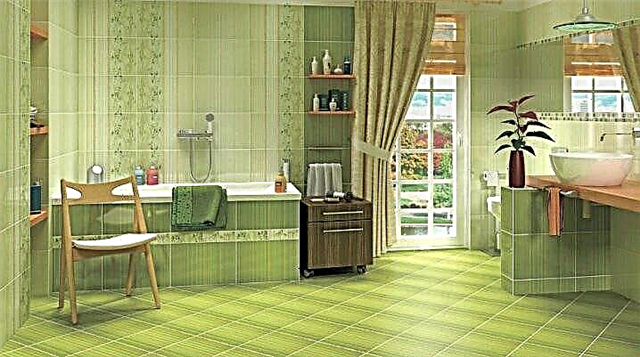
There are two types of green floor tiles.
- Tile. This coating is quite durable. It is made from a mixture of clay, sand and special additives by firing, on top it is covered with a layer of glaze. Suitable for rooms where there is no large influx of people.
- Porcelain tile. This coating has higher strength values than the previous sample, and can be used even in large stores. It is made by pressing a mixture of clay, sand with the addition of special mineral additives and kaolins, and then firing the workpieces at very high temperatures.


Floor tiles of green color, whatever type it may be, may have a glossy sheen or be matte. At the same time, glossy tiles usually have a brighter coating, it is easier to wash. But this type also has a drawback - such a coating is more slippery than material with a matte glaze. Matte tiles perfectly protect you from falling on a damp floor, but washing it from dirt is quite problematic.
Note that wall samples of ceramic tiles for laying on the floor are not recommended, since they have a more slippery coating, which can be traumatic. Also, such a coating will be quite fragile, may not withstand the weight of a person and the load from the furniture installed on him.
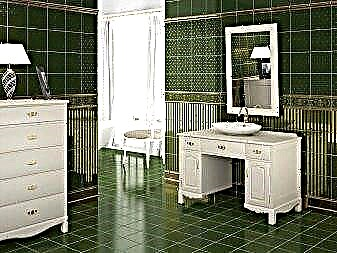
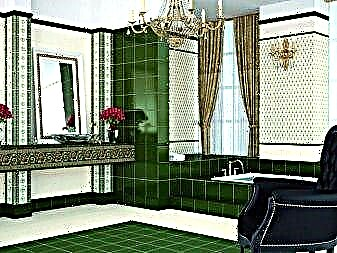
Tile for the floor - design ideas for all rooms of a modern house (85 photos)
The flooring plays a big role in the interior of any room, so its choice must be approached very carefully. The assortment of coatings offered for sale is quite wide; it is necessary to choose any particular material, taking into account the characteristics and purpose of each concrete premises being finished.
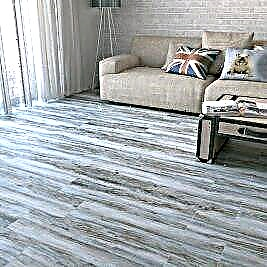
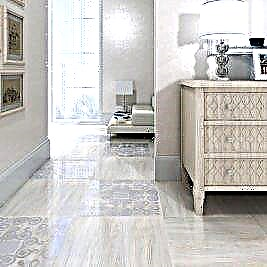
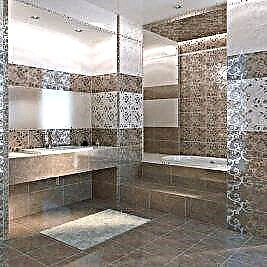
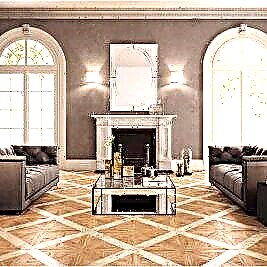
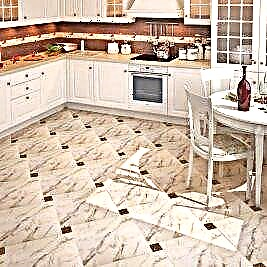
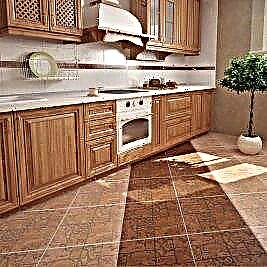
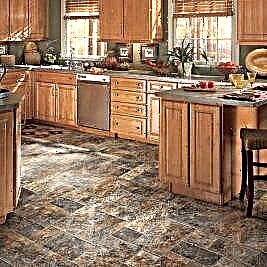
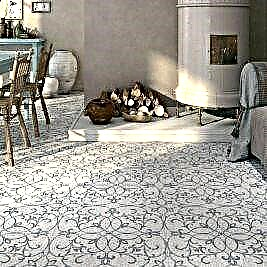

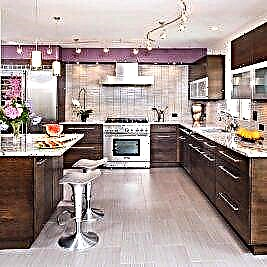
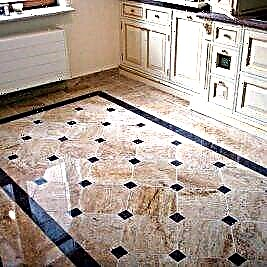
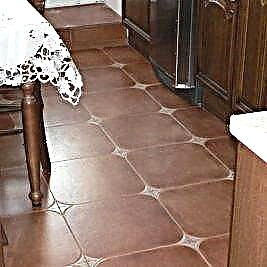
You can verify the variety of color and texture of this floor covering by looking at the numerous photos of floor tiles. They will show how truly original and aesthetically pleasing this decoration option looks in a wide variety of interiors.
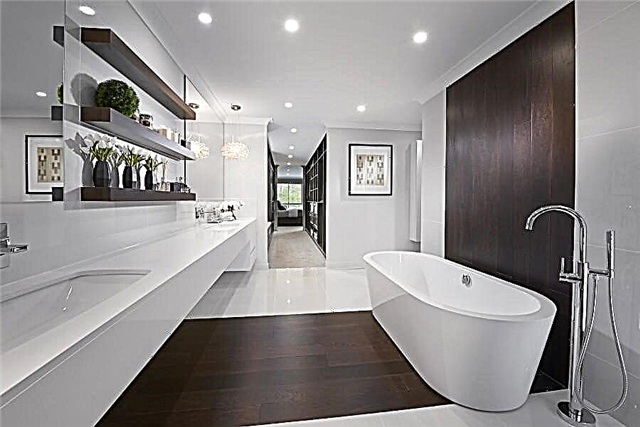
Hardness. This disadvantage can become significant for families with small children, when falling tiles will increase the likelihood of damage to babies.
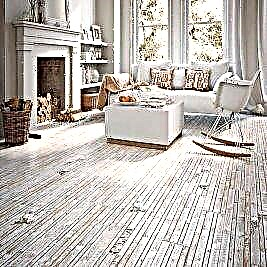
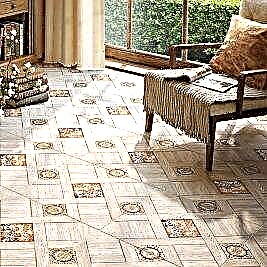
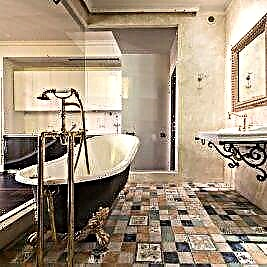
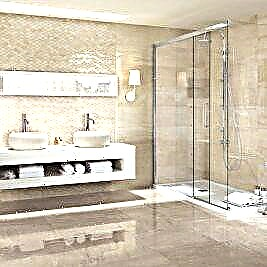
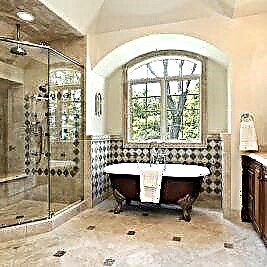
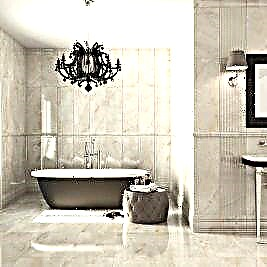
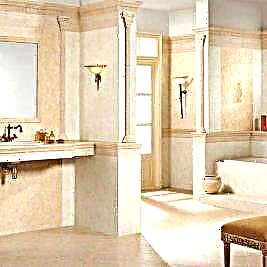

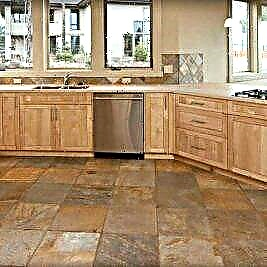
How to choose a tile
When buying tile, you need to have a minimum set of knowledge in order to freely navigate and understand the proposed range. From the huge variety, it is important to choose an option that will be flawlessly suitable for each particular case.
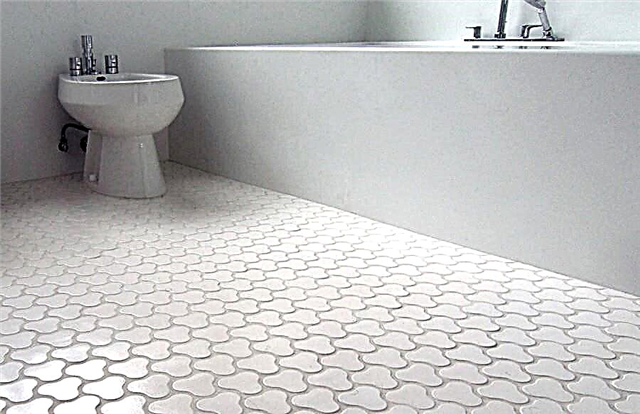
For the kitchen, it is advisable to focus on tiles with a glazed surface, this will facilitate wet cleaning in the room.
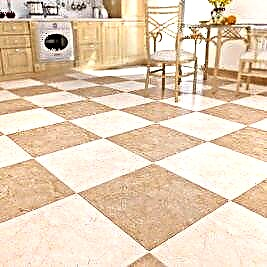
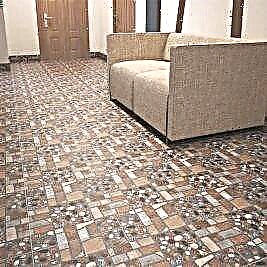
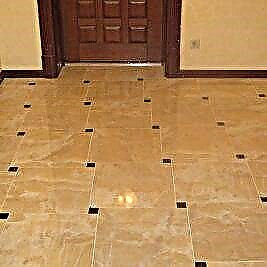
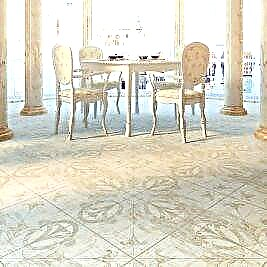
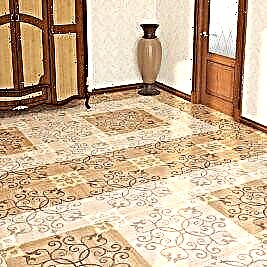
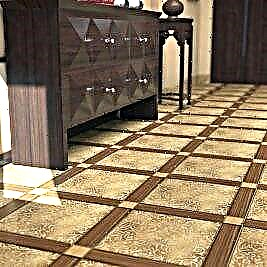
When choosing a tiled floor covering, be sure to follow the product labeling. For these purposes, models with the image on the footprint packaging are suitable. It is important not to confuse floor tiles with wall or ceiling views.
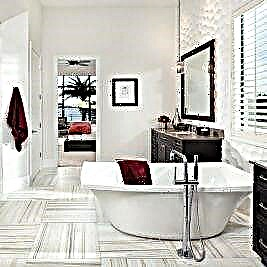
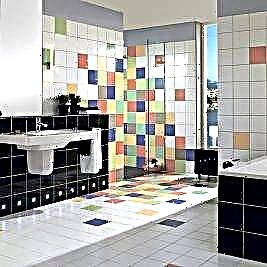

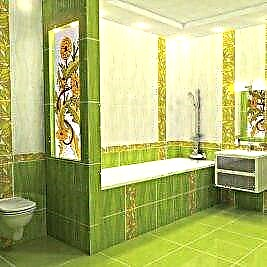
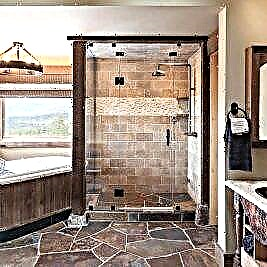
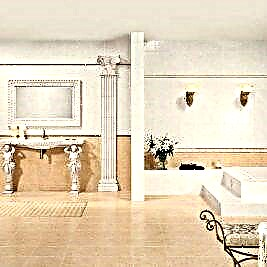
You can buy floor ceramics in the color of the walls, you can stay true to the classics and choose white, pastel, light, brown shades.
Hallway
And, finally, often the floors in the hallways, corridors are tiled. These rooms are constantly exposed to pollution, as they are in close proximity to street dust and dirt, so they really need a wear-resistant, unpretentious and easy-to-care floor covering, which is just a tile.
Floor tiles for the kitchen - sizes, formats, prices, laying nuances
What kind of tile is suitable for the floor in the kitchen, how to choose the size, format and read the markings, the nuances of laying the tiles on the floor, manufacturers, prices and photos of floor tiles in the interior of the kitchen - here.
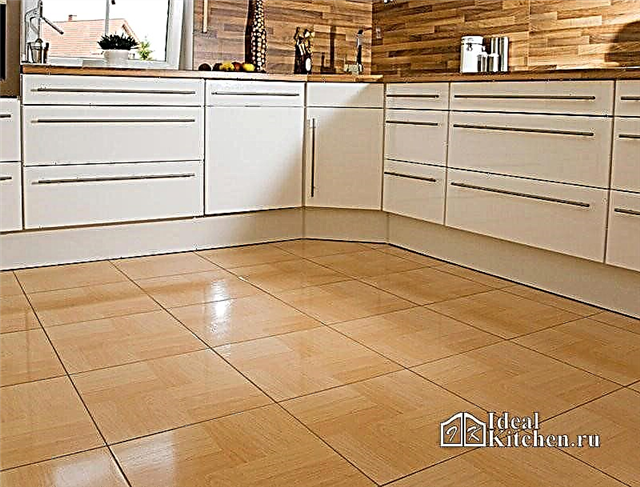
There are many advantages to floor tiles. The main one is that the tile will serve in the kitchen much longer than laminate or linoleum, and much more practical in cleaning. But she has enough minuses.
Ceramics is a very cold material. You can walk on tiles only in slippers. Therefore, if you want to make the kitchen more comfortable, you will have to invest in a warm floor system. Due to its excellent thermal conductivity, ceramic tiles are ideally suited for its construction.Unlike the same linoleum.
Another minus of the tile is poor sound insulation, so a soundproofing layer may be needed. An active child can injure his knees on a hard tile, and cups or plates that accidentally fall to the floor will be guaranteed to break. And the tile itself from a strong blow can crack. Laying tiles takes time, experience or money, and the work is pretty dirty.
These cons do not scare you Then we figure out how to choose the best tile for your kitchen.
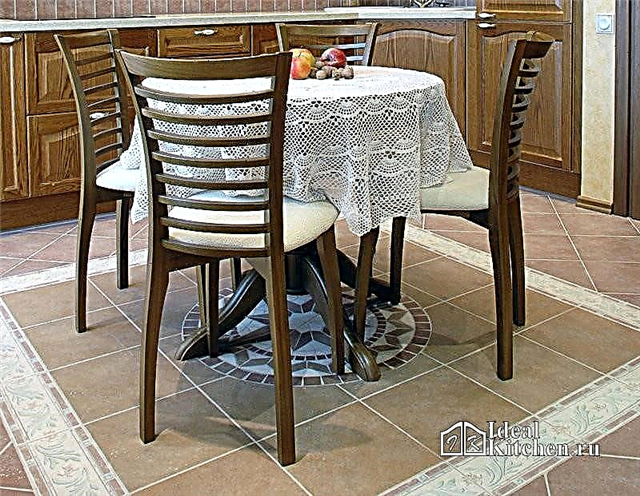
What kind of tile to choose for the floor in the kitchen
- You can’t put wall tiles on the floor (its surface will quickly lose its beautiful appearance, but the tile itself may crack), but you can floor on the walls. Floor tiles are much stronger and more durable due to the special production technology. Look for foot markings on the box. Wall tiles are indicated with a palm icon.
- For the kitchen, it is especially important that the surface of the floor is not slippery. High-quality ceramic tiles are necessarily marked with a coefficient of friction. If it is more than 0.75, such a tile is not slippery and quite safe, it can be safely put in the kitchen. Do not take tiles with a coefficient of friction of less than 0.4 - if water spills on the floor, someone from your household may slip.
- The kitchen floor is subjected to the most severe loads, therefore, experts recommend laying strong and wear-resistant tiles - grade III hardness according to PEI classification or grade 5 according to GOST. If you do not use the kitchen very often, the PEI II class is also suitable, but such tiles are less durable. Some manufacturers label wear-resistant tiles with a hatched foot symbol.
- If you like the kitchen to shine with cleanliness, and often wash the floor with strong detergents, you should give preference to ceramic tiles labeled AA. The surface of such ceramics has maximum resistance to chemicals. So, she is not afraid of the most aggressive household chemicals. The protective layer of such tiles repels dirt and is easy to clean.
- For the kitchen floor, matte rather than glossy tiles are better. On a matte and semi-gloss surface, scratches and scuffs are much less noticeable. However, keep in mind: if the tile is too rough and porous, all impurities will stick to it, and the floor will constantly look dirty. For the same reason, do not put too embossed tiles in the kitchen.
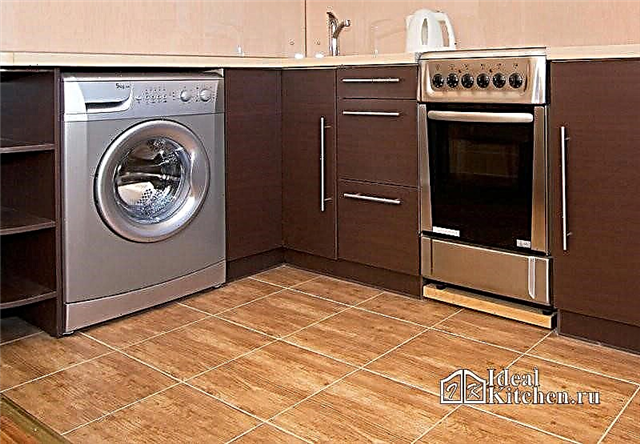
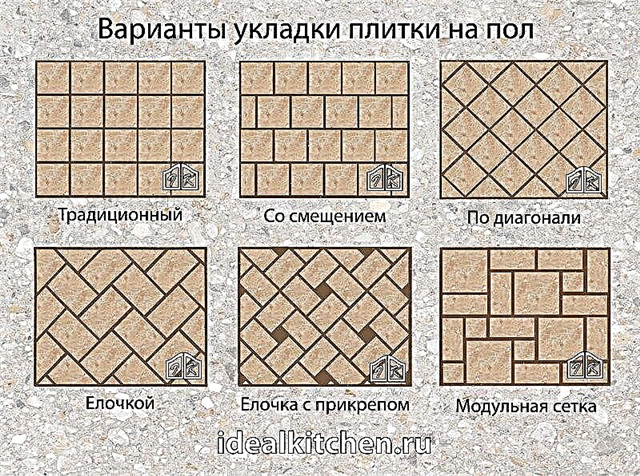
3 important nuances
1. The ideal option is when the width of the tile is a multiple of the width and length of the room. For example, one square meter of floor perfectly fits nine tiles measuring 33.3 x 33.3 cm. Then most of the tiles do not have to be cut. So, laying will be easier, faster and cheaper.
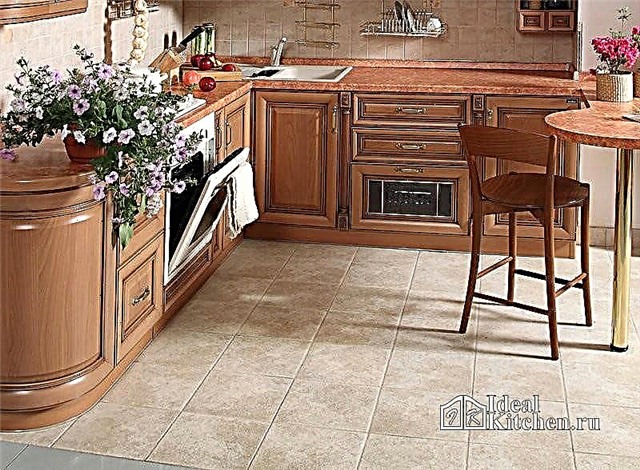
Before buying tiles, carefully measure the length and width of your kitchen. Explore the assortment of several online stores or take a look at the construction hypermarket. Choose several options for floor tiles that you liked the most and write down their sizes. Now take a calculator and calculate which tiles your kitchen will have exactly in size.
2. When choosing a ceramic tile, be especially careful - remember about its caliber! The fact is that the actual size of the tile may vary by 5-7 mm in plus or minus from the nominal, approximate, which the manufacturer indicates on the price tags and in the catalogs. You have chosen a tile of 30x30 cm, and its actual size is 29.5x29.5 or 30.5x30.5 cm.
This is not a marriage, but a feature of ceramic production.
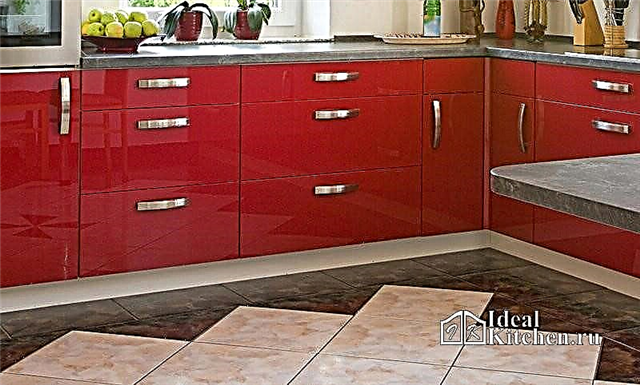
Serious tile manufacturers, European and Russian, always sort the tiles by caliber and indicate this parameter on the packaging. Chinese factories often neglect sorting. Therefore, having bought Chinese tiles, be prepared for the fact that ceramics of different sizes can appear in one box. It will have to be sorted and, if necessary, trimmed by yourself.
3. When deciding on the size of floor tiles, keep in mind the evenness of the base. If the kitchen floor has defects, and work on its careful leveling does not fit into the budget of your repair, give preference to a small 10x10 or 20x20 cm tile. It visually conceals the unevenness of the floor, and there will be less voids under it, due to which the tile after a while may crack.
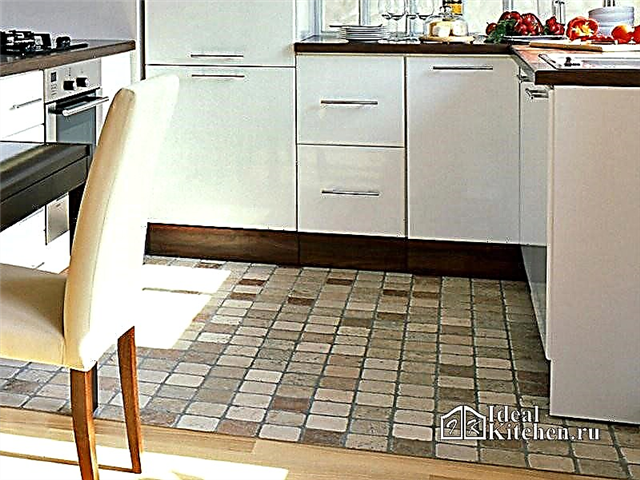
Color and tone
Ceramic tiles from the same collection, but from different batches, differ not only in size, but also in tone. For example, the color may be darker or lighter, brighter or, conversely, muted. Manufacturers sort the tiles by tone and put the appropriate markings on the box. As a rule, this is a combination of letters and numbers or some kind of symbol.
For example, A45 or 12.

We choose the design of floor tiles for the kitchen
- A light tiled floor will make your kitchen lighter and visually more spacious, so this option is well suited for a small space. Dark tiles will only emphasize the small size of the kitchen. But even if the area allows, the dark floor should definitely be compensated for with light furniture and wallpaper.
- If the windows of your kitchen face the north or west side, choose a monochromatic finish for the floor in warm light colors. And the warm "southern" kitchen will also well perceive the tile of saturated cold shades.
- In a kitchen in a modern style, hi-tech or minimalism is the best choice - a plain floor or tile with the most neutral and unobtrusive design. The kitchen in the classic style is perfectly complemented by marble tiles or ceramics with antique ornaments. And the country interior or Provence will complete the floor, laid out by artificially aged ceramics, imitation of cotto tiles or patterned ceramic “carpet” from metlakh tiles or its imitation.
Wood or ceramic floor tiles
You can read in great detail about this finishing material in this special review. Keep in mind: most of the tiles under the tree are not tiles, but porcelain tiles. Long ceramic tiles, reminiscent of a board or laminate, breaks easily, so they often make short “boards” or square tiles with a wood pattern that imitate stacked parquet.
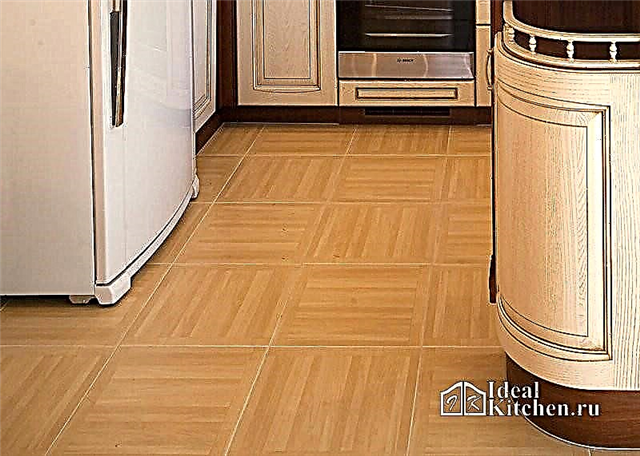
Often, wood-like tiles are rectified; they are laid without visible seams. This creates a very authentic illusion of a real wooden floor, parquet board or solid wooden surface.
The simplest and most unpretentious wood floor tiles in online stores in Moscow and the region can be bought for about 470-700 rubles per square meter (for example, the Dublin collection from Uralkeramik, Karelia from the Kharkov tile factory). Russian wood-like tiles and parquet from the Kerama Marazzi factory costs from about 650 rubles per square meter (the Divine Garden, Cassia, Glasgow collections).
Prices for Spanish ceramics imitating a wooden floor start at 1300-1500 rubles per square (Wood collections from Monopole Ceramica, Brilliant from Absolut Ceramica, Lignum Natural and Savage from Cifre, Bosco from Gaya Fores, etc.)

Stone floor tiles
In many cases, only professionals can distinguish a good ceramic imitation from natural stone in appearance. So modern production technologies allow us to convey the characteristic pattern and texture of granite, quartzite, marble, basalt or other rock. In most cases, stone tiles are also not tiles, but porcelain tiles - they are stronger and more durable than ordinary ceramics. But even among ordinary ceramic tiles you can find very interesting solutions.
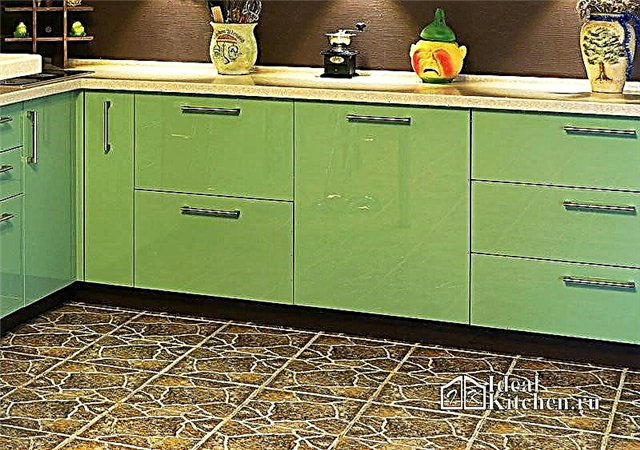
Of the inexpensive options (an average of 500-700 rubles per square meter in Moscow online stores), pay attention to the collections of the Volgograd ceramic factory (Allegro), Kerama Marazzi (Transbaikalia, Kameya, Still Life, Aurelia, Sella, etc.), Shakhtinsky tile ( Pietra), Atem, Jade Ceramics (Watercolor), Uralceramics (Adagio).
The middle-priced option is Polish “stone” tiles for 1000-1200 rubles per square meter (Samaria from Tubadzin and others) and Spanish ceramics for 1000-2700 rubles per square (collections of factories Europa Ceramica, MYR Ceramica, Venus Ceramica, Mainzu, Argenta Ceramica, Pamesa, Keros Ceramica, Dualgres, etc.).
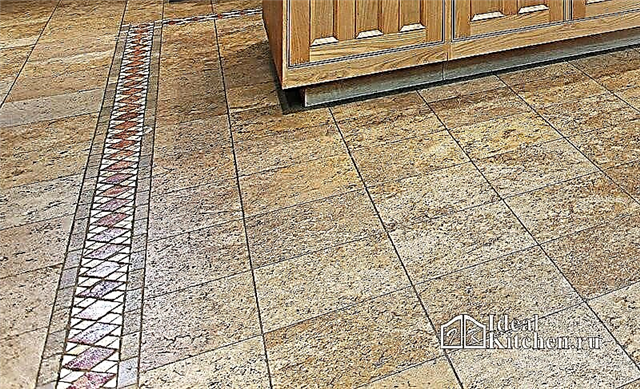
Italian stone floor tiles are very different in price - depending on the factory, its cost varies from 1200 to 4000 rubles per square meter (factories Imola Ceramica, Serenissima Sir La Faenza, Del Conca, Majorca, etc.
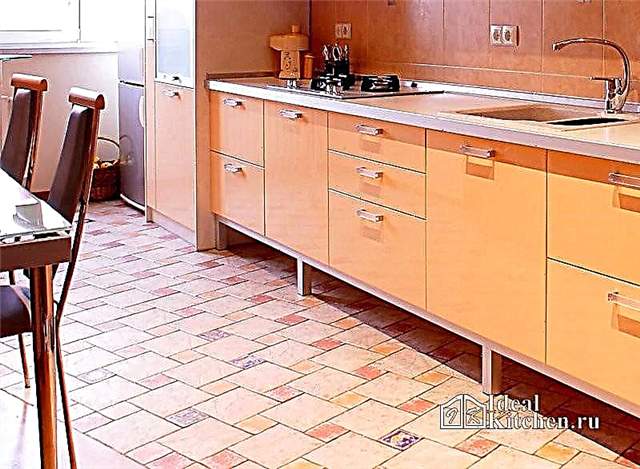
Laying tiles on the floor - 3 things you need to know
- If you plan to make repairs in the kitchen yourself or save on the services of a tiler by inviting cheaper craftsmen, keep in mind: the slightest deviation from the technology of laying tiles can have sad consequences. If the base of the floor is not even enough and there is an air gap between the floor and the tile, the tile can easily crack if a heavy object falls on it and it will have to be replaced. Make sure that such voids are not more than 10% of the floor area and they are not concentrated in one place.
- It is highly advisable to remove the old flooring. The tile floor will last a long time only if the base is well prepared. It should be even, hard and dry. If the floor is cement, remove bumps and irregularities, repair cracks and holes. If the old one is wooden, properly fix the “loose” boards and strengthen with additional struts.
- Thoroughly clean the floor of dust and debris. All this is necessary so that the tile and glue can adhere to the surface as best as possible.
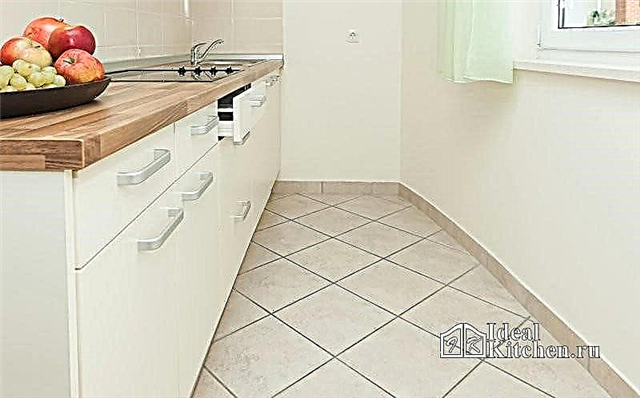
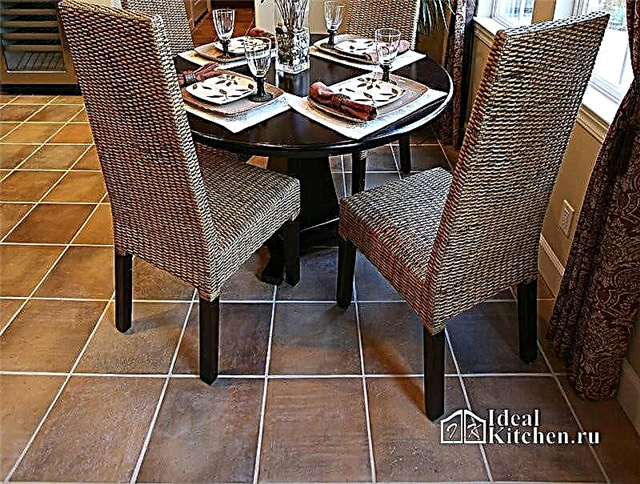
What grout to choose for the floor in the kitchen
- If you chose a plain tile for the kitchen, grout can also be bought to match. But in many cases, contrasting seams will look better - they favorably emphasize the geometric pattern of the floor.
- If the floor is tiled with two or more colors, designers usually take the grout in tone of the main shade, which occupies a large area.
- For tile joints on the floor, epoxy grout is very suitable. It is much stronger than cement, it is not afraid of moisture, does not absorb dirt, fungi do not start on it. But it costs more, and it’s more difficult to work with it. The surface of the cement grout can be treated with special protective compounds and sealants. Read more about them in our special review.

Manufacturers
Floor tiles for the kitchen are usually found in every collection of any decent ceramic manufacturer. A good combination of price and quality is given by Russian (Kerama Marazzi, Jade Ceramics, Kerabud) and Polish (Cersanit, Opoczno, Paradyz, Tubadzin) factories.
Beautiful ceramic tiles for wood or stone are produced by Spanish manufacturers, but today the price of Spanish and especially Italian tiles can hardly be called budget. However, in the assortment of Russian manufacturers you can find very good options of good quality.
Small bathroom with tiles: choice of color and size, photo of ready-made solutions
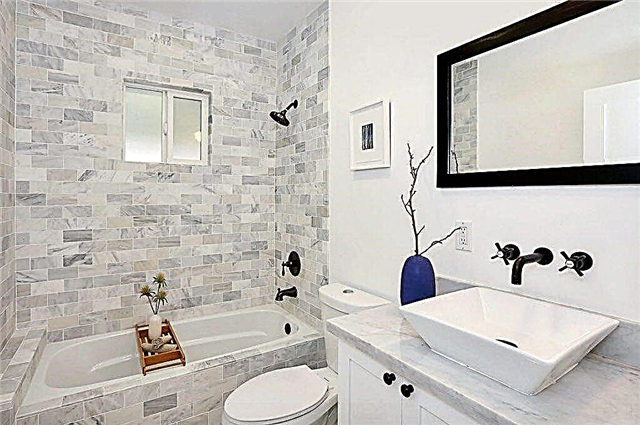
At the moment, when choosing finishing materials for the bathroom, most owners of apartments and private houses turn their attention to ceramic tiles. This decision is easily explained, because the material has a number of advantages, including practicality, attractive appearance, ease of maintenance and excellent performance properties of the tile.
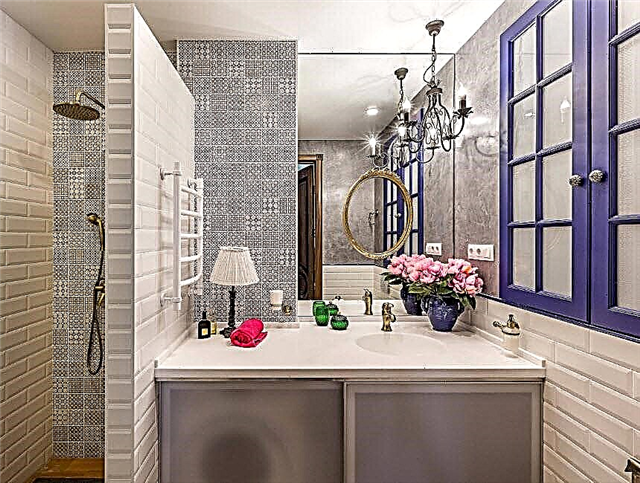
Thanks to a wide range of products in price, color, shape and size, everyone can choose the most suitable material for the decoration of the room. The most difficult thing is to design a small bathroom, because for it you need to carefully choose the tile based on its physical properties. The main task in creating the interior design of a small bathroom with tiles is a visual increase in space.
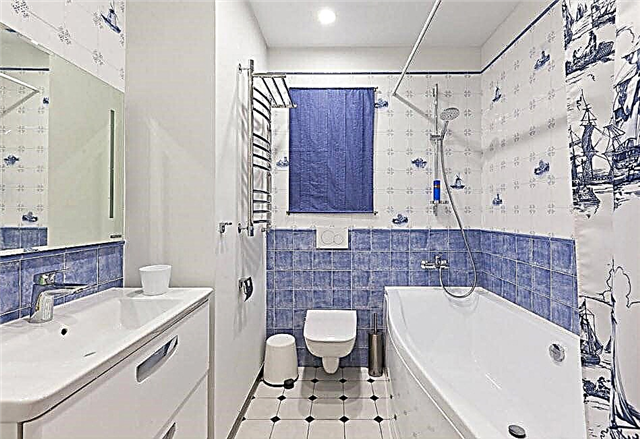
Tile color selection
When designing a room with a small area, first of all you need to do everything in order to visually increase the area of the room, using light tones for decoration. At the same time, you need to understand that wall and floor decoration with white ceramic tiles is a boring and impractical solution, as a result of which you can create a bathroom that evokes associations with a medical institution. Moreover, this solution will only enhance the illumination of the room, but will not increase the space.
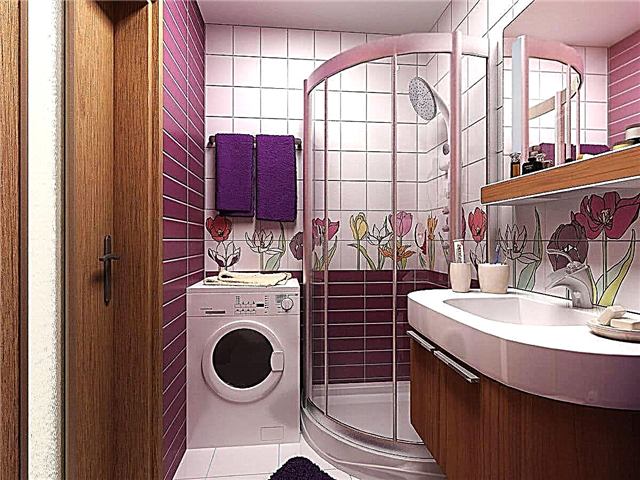
When choosing a white tile, it is important to combine it with other tones, including:
- Peach.
- Terracotta.
- Lavender.
- Blue.
- Green or light green.
- Sand.
- Light yellow or pale lemon.
- Pearl gray.
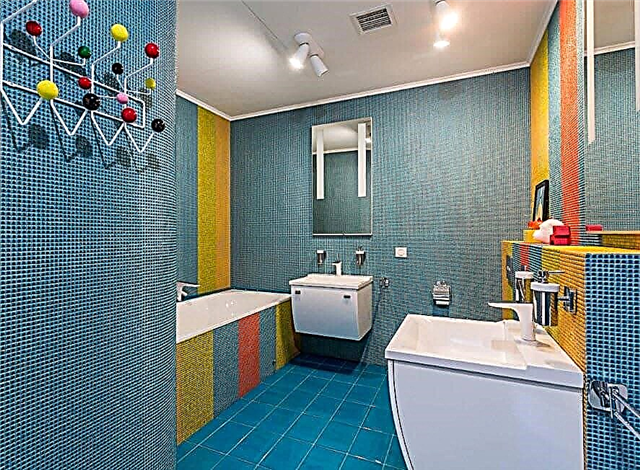
Despite the fact that the bathroom is small, the use of exceptionally light colors is not necessary. When designing a small room, dark tiles are also allowed, the main thing is to choose the right shade. For example, the color of Marsala or dark blue tiles will give the interior depth, while not affecting the geometry of space. The only drawback of the tile of dark tones is that it contains a calcareous coating of hard water, so the surface needs careful maintenance.
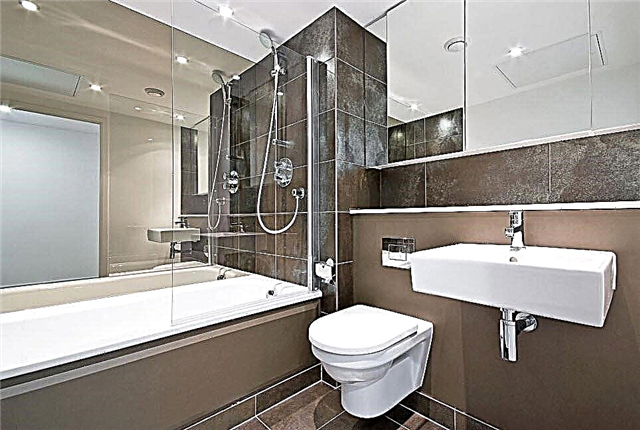
In order to revive the interior of a bright bathroom and make it more interesting, you need to use bright impregnations. For example, you can use tiles with a pattern, bright borders or contrasting decor elements arranged in a chaotic order. It is important not to use many colors, because the room will seem cluttered, which will negatively affect the feeling of comfort and coziness.
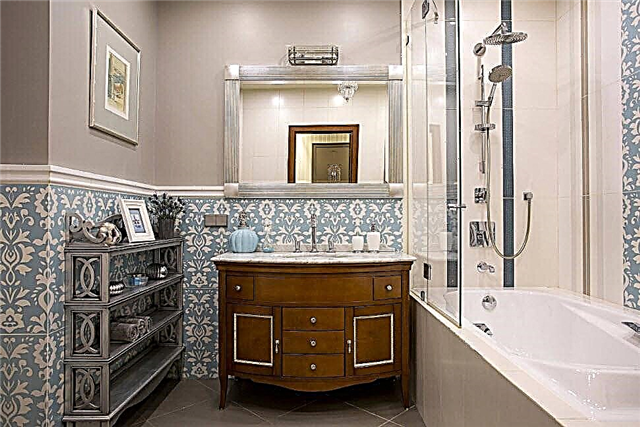
Color combinations
To create a harmonious interior of a small bathroom, it is important to choose the right combination of colors for decorative materials. All shades of the color palette can be divided into three groups:
- Warm - beige, sand, peach and light yellow.
- Cold - olive, light purple or blue.
- Neutral - white, pink, lilac or light gray.
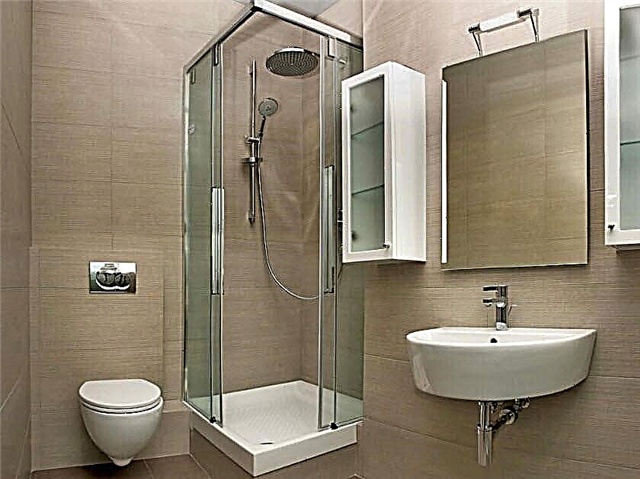
Experienced designers recommend not combining warm and cold tones in a small bathroom. It is best to dilute the color with neutral tones, choosing shades so that they do not create contrast, but harmoniously combine with each other. In addition, to create a cozy room, it is important that the light shade remains dominant, making the space seem spacious and comfortable.

The best color combinations for a small bathroom:
- Beige and ivory.
- White and light gray.
- Blue and cyan.
- Pink and pale purple.
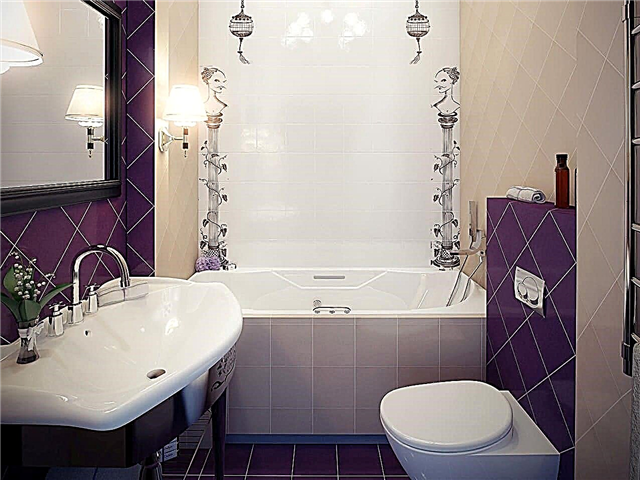
If the room is as small as possible, then ceramic tiles of the same color but different shades will help to make it attractive. Material of a darker shade is used to finish the floor and large walls, light tile is used to clad smaller walls. Thanks to this, you can change the geometry of the room, making it more comfortable and spacious. Horizontal lines laid out with dark tiles will also help. Vertical lines and lighter tones will help to raise the ceilings, in comparison with the tiles used for decorating walls and floors.
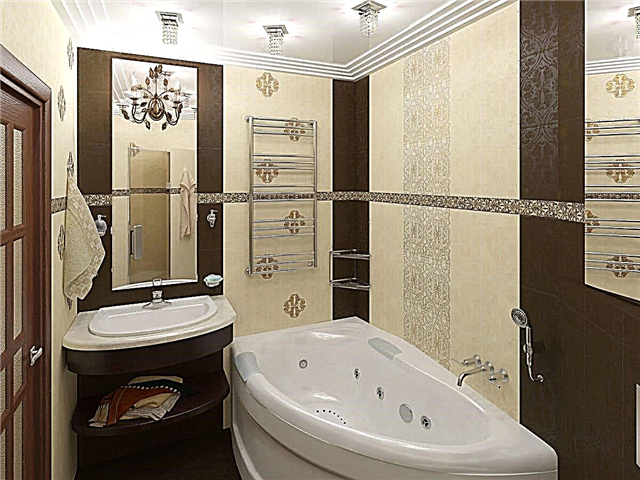
Can I use large tiles in a small bathroom?
When choosing a tile used for cladding a small bathroom, it is important to pay attention not only to its color, shape and texture, but also to size. Many are convinced that large tiles cannot be used, but designers are convinced of the opposite. As it turned out, large tiles can be used to decorate a small bathroom, the main thing is to correctly position the tile so that it visually increases the space. To do this, from large squares or rectangles, create a vertical strip on one of the walls. Large tiles are not used as flooring, since this is impractical due to the large number of scraps.
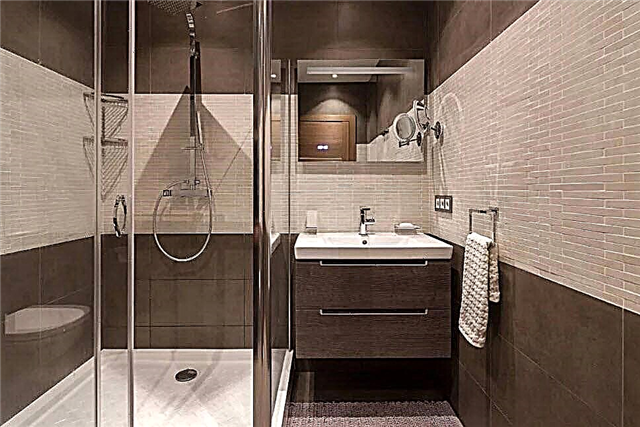
The optimal tile size for wall and floor decoration is 20 * 20 (if the room is square) or 20 * 30 centimeters (for a rectangular bathroom).Experienced craftsmen argue that a correctly selected shape and size of a tile will allow to achieve a more expressive effect of a visual increase in space than a successful choice of a color palette.
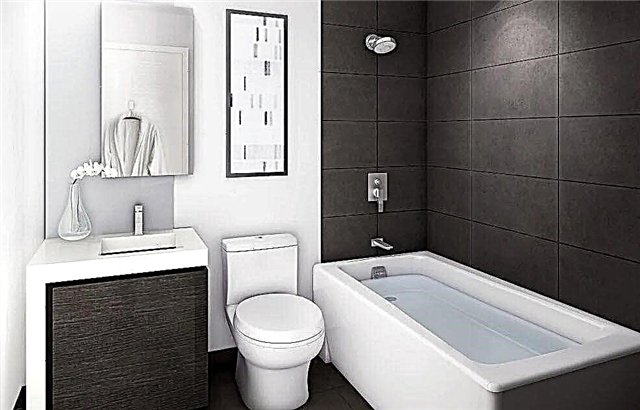
Decor of a small bathroom with tiles
In order for the interior design to be more attractive and interesting, it is important to choose a decor that can serve:
- Mosaic (glass, metal or contrast).
- Tile with embossed texture imitating fabric, brick or stone.
- Tile with a pattern.
- Mirrors
- Frieze and borders.
- Tile grout.
- Gold and silver inserts.

Green tile selection
So, you have decided to revet the bathroom with green tiles. When buying, be sure to pay attention to what is written on the label. The fact is that for walls and for floors, facing materials of different types are used.
Floor tiles are durable, they are not slippery, often with a dull surface. The label shows the foot. On the label of the tile intended for walls, the image of the brush is applied. If the facing material is resistant to environmental influences, then the letters “AA” are applied to the packaging. For walls, you can use the classic enameled cladding material. This tile has a presentable appearance, easy to clean. In addition, it is resistant to cleaning products. However, it also has drawbacks - fragility and short-term operation.
Type and size of tile
The appearance of the bathroom will be affected not only by the color of the ceramic tiles, but also by its size and surface type. In this regard, you have a huge selection - on sale you can find tiles of various sizes and with different surfaces.
If you have a decent size bathroom, then the size of the cladding material is not that important. Here you can use large or small tiles or decorate the room with mosaics. You can also "play with the size", using at the same time tiles of different sizes. Thus, you can create some kind of drawing or conditionally divide the room into zones.
It is quite another matter if the bathroom is small. There are not many options. It is not recommended to use facing material of large sizes - this will look ugly. Fine tile or mosaic in this case is also not the best option - this will visually reduce the space of the room. The best option in this situation is the choice of medium-sized tiles: 20x20 or 30x20. With the location of the square tiles, there should be no questions. But how to lay a rectangular tile on the wall: vertically or horizontally? In the first case, you can visually increase the height of the bathroom, in the second - the width. The same goes for gender.

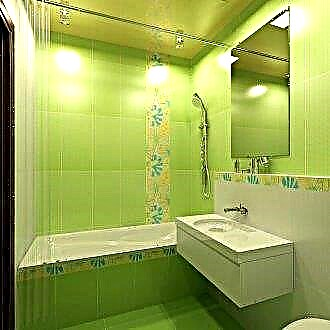
According to the type of surface, ceramic tile is divided into the following types:
Glossy tiles are most widely used. This is easy to explain - it displays colors brighter, has a beautiful appearance. In addition, it is very easy to wash. However, gloss has its drawbacks. He, reflecting the light, creates glare. This negatively affects the eyes. If you have vision problems, it is best to use a matte tile. This tile is also ideal for flooring. It has a rough surface, it is impossible to slip on it. However, it is more difficult to wash tiles with a dull surface, respectively, than with a glossy one.
If you want to give your bathroom a unique, original appearance, then use textured tiles for facing. It is also called decorative. It will make your bathroom a real work of art!
Decorative tiles imitate various materials: sand, stone, pebbles, water, air bubbles, metal, wood, cobwebs and so on. Simply plug in your imagination here or trust a professional designer.
Shades
If you decide to decorate the bathroom with green color, you can try to play with its various shades: olive, emerald, lime, lime and so on. If you want to give the room a classic style, it is better to use a tile of dark green tones. If you like a more modern design, then it is better to use light green tones. In this case, you visually expand the size of the room.
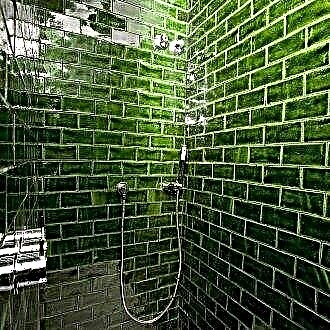
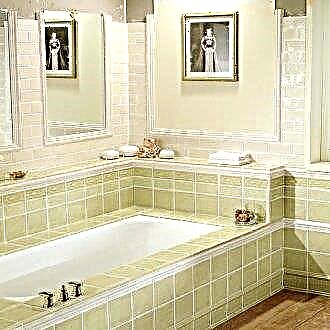
Green color goes well with many other colors, but you need to be careful here - some color combinations may look unpresentable. It is ideal to use white, yellow, beige and cream colors with the green color for decorating the bathroom.
When facing the bathroom, it is desirable that the color of the tiles differ from the color of the plumbing. If the tile is green, plumbing should be light, and vice versa. Furniture can be the same color as the walls.
Bathroom Style
Modern designers distinguish the following styles for the design of the bathroom:
- The Greek style is characterized by white or olive colored tiles. The floor and walls should be in different colors.
- If you want to design your bathroom in a marine style, you need to pay more attention to pastel, gentle colors. Here, decorative tiles are suitable. Any seascape will look very good on the wall.
- Tropical style. In this case, you need to give preference to bright pistachio, sand or light green shades. Matte sand-colored tiles are ideal for the floor. To complement the design, place living plants, wicker furniture, and brightly colored towels in the bathroom. In this case, you can not go to the tropical islands.
- Vintage style. As in the case of the Greek style, it is necessary to give preference to the olive color. Instead of tiles in vintage style, it is better to use wood to decorate the floor, but then there should be good ventilation. Ideally fit into this style of plumbing on carved legs.
- The Art Deco style for the bathroom is a combination of green with white, yellow or gold colors. This combination can be complemented with metallic color.
- The avant-garde style is suitable for young people. Finish one wall with green tiles, the other with black and white. On the floor you can put a matte tile of sand color.
- Mosaic. In this case, countless options. It all depends on your rich imagination. You can experiment with tiles of various colors and sizes.
Recommendations for choosing the color of the floor in different rooms
The right choice of colors for flooring, will create an individual style in the room and set the desired mood.
| Room | Features | Photo |
|---|---|---|
| For kitchen. | ||
| In the hallway and corridor. | ||
| For the bathroom. | ||
| For the living room. | ||
| For a children's room. |

